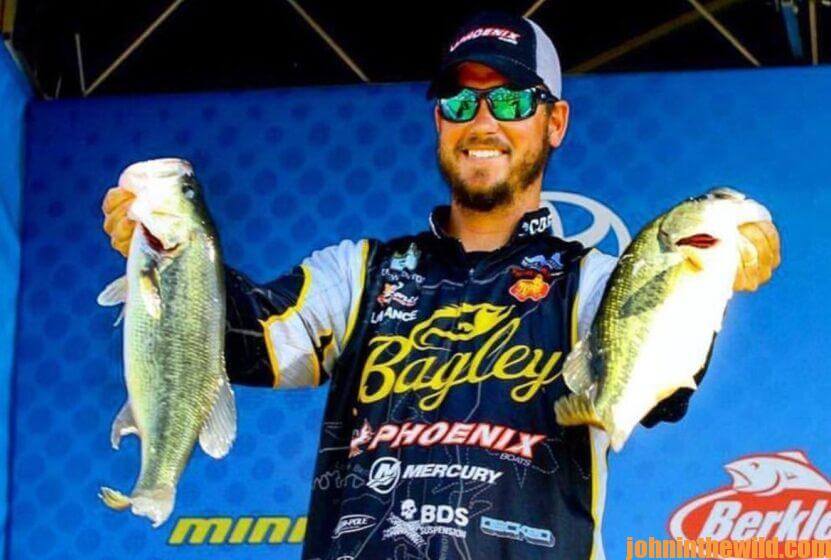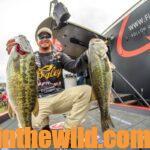Editor’s Note: Thirty-four-year-old Drew Benton from Panama City, Florida, began his tournament fishing career on the FLW Circuit (https://www.flwfishing.com/) and fished three seasons there and then moved to the Bassmaster Elite Series in 2016. He’s earned about $740,000 fishing tournaments. He was named Rookie of the Year in 2016 and won 1st place on Lake Travis in 2018 and $100,000. Benton fished bass tournaments in high school and college, while going to school. Benton’s favorite lakes to fish are Lake Seminole on the Florida-Georgia line and Lake Eufaula on the Alabama-Georgia line. At this time of the year, he’s really comfortable fishing weather 100 degrees or more. I asked Benton how he finds bass in over 100-degree temperatures, and how he catches them.
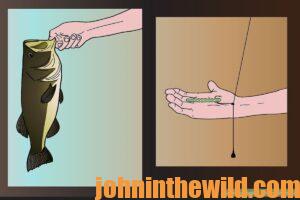 Whenever I use a dropshot rig, I’ll fish 15-pound test Seaguar braided line (https://seaguar.com/) as my main line. Then to the braided line I’ll tie a 10-pound test Seaguar Invizx fluorocarbon line, 6-10 feet long, to the braided line with either an FG knot and/or an Alberto knot. I believe the FG knot to be a stronger knot that goes through the guides on your rod easier than the Alberto knot. But it takes me longer to tie that knot than it does to tie the Alberto knot that I can tie really fast. Once I initially tie my lure to my weighted line, I’ll tie the FG knot, but during the day if I break off my leader and have to tie the leader to the line a second time, I’ll use the Alberto knot.
Whenever I use a dropshot rig, I’ll fish 15-pound test Seaguar braided line (https://seaguar.com/) as my main line. Then to the braided line I’ll tie a 10-pound test Seaguar Invizx fluorocarbon line, 6-10 feet long, to the braided line with either an FG knot and/or an Alberto knot. I believe the FG knot to be a stronger knot that goes through the guides on your rod easier than the Alberto knot. But it takes me longer to tie that knot than it does to tie the Alberto knot that I can tie really fast. Once I initially tie my lure to my weighted line, I’ll tie the FG knot, but during the day if I break off my leader and have to tie the leader to the line a second time, I’ll use the Alberto knot.
Next I’ll attach my dropshot hook, made by Owner (https://www.ownerhooks.com/). It’s a light-wire straight-shank hook with a small monofilament bait keeper on it, and my preferred size is a 2/0. After I have my hook tied on, I take the tag end of the line and run it back through the eye of the hook. Then that hook will stand parallel out from the line, and my knot will be down in the eye of the hook. I want to have about 12-16 inches of line below the hook, and on the end of the line is where I tie my weight. Next I’ll put on a shaky-head worm made by Big Bites Bait (https://bigbitebaits.com/) on my hook. The colors I like to use are either green-pumpkin, morning dawn or plum in the summer. When my lead hits the bottom, I want a fairly-tight line to hold the dropshot in the same place where the lead’s hit the bottom. That braided line will cause the plastic worm to start dancing, even though I’m keeping the line fairly-tight. If I can’t get the bass to bite using this technique, I’ll use my LiveSight to determine what depth of water the bass are holding in, and then I’ll drop my dropshot straight down into the exact spot of the school where the bass are concentrating.
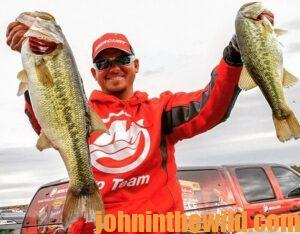 One of the big advantages of the Lowrance LiveSight transducer (https://www.lowrance.com/) is I can see my dropshot falling into the school. If one of the bass in the school follows the worm down to the bottom, there’s a pretty good chance it will bite. If the bass doesn’t bite the worm, I’ll use my trolling motor to back away from the worm and shake my rod tip a little bit, since I know the bass are looking at that worm. However, if I’m straight over the school, I think the school probably can hear my sonar popping. By backing away from the school to where I think the bass can’t hear my sonar, sometimes the bass will bite. Another trick I’ll use is I’ll vertical fish the dropshot rig. I don’t set the hook when the bass takes the dropshot rig, I’ll just start reeling my spinning reel. Once I feel the weight of the bass, I pull my rod straight up. The secret to landing that fish is to make sure it can pull the drag off your reel, so that bass won’t straighten the hook because it’s only a wire hook.
One of the big advantages of the Lowrance LiveSight transducer (https://www.lowrance.com/) is I can see my dropshot falling into the school. If one of the bass in the school follows the worm down to the bottom, there’s a pretty good chance it will bite. If the bass doesn’t bite the worm, I’ll use my trolling motor to back away from the worm and shake my rod tip a little bit, since I know the bass are looking at that worm. However, if I’m straight over the school, I think the school probably can hear my sonar popping. By backing away from the school to where I think the bass can’t hear my sonar, sometimes the bass will bite. Another trick I’ll use is I’ll vertical fish the dropshot rig. I don’t set the hook when the bass takes the dropshot rig, I’ll just start reeling my spinning reel. Once I feel the weight of the bass, I pull my rod straight up. The secret to landing that fish is to make sure it can pull the drag off your reel, so that bass won’t straighten the hook because it’s only a wire hook.
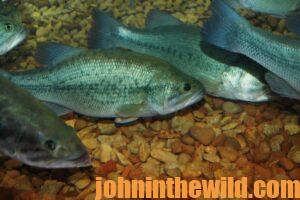 I’d prefer to catch the bass by casting through the school, maybe dragging my dropshot 4-6 inches and stopping it again. But as a last resort, I’ll move straight on top of the school and fish straight down to the bass. I realize I’m risking scattering the bass if I pull my boat right on top of them, so I really hate to fish a dropshot rig vertically right on top of the bass. I know that most of the time when I put my boat right over the fish, I’ll scatter them. However, oftentimes I can get the fish to bite when nothing else works. When I’m dropshotting, I use a 7-foot, 1-inch Medium Feather Series Phenix rod and a spinning reel with a quality drag system.
I’d prefer to catch the bass by casting through the school, maybe dragging my dropshot 4-6 inches and stopping it again. But as a last resort, I’ll move straight on top of the school and fish straight down to the bass. I realize I’m risking scattering the bass if I pull my boat right on top of them, so I really hate to fish a dropshot rig vertically right on top of the bass. I know that most of the time when I put my boat right over the fish, I’ll scatter them. However, oftentimes I can get the fish to bite when nothing else works. When I’m dropshotting, I use a 7-foot, 1-inch Medium Feather Series Phenix rod and a spinning reel with a quality drag system.
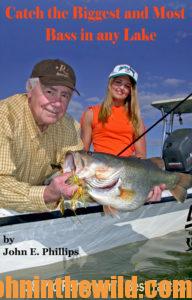 To learn more about bass fishing, check out John E. Phillips’ book, “Catch the Most and Biggest Bass in Any Lake,” available in Kindle, print and Audible versions at
To learn more about bass fishing, check out John E. Phillips’ book, “Catch the Most and Biggest Bass in Any Lake,” available in Kindle, print and Audible versions at
https://www.amazon.com/gp/product/B008BVVO8M/ref=dbs_a_def_rwt_hsch_vapi_taft_p4_i6.
You may have to copy and paste this click into your browser. When you click on this book, notice on the left where Amazon says you can read and hear 10% of the book for free. On the right side of the Audible page for this book and below the offer for a free Audible trial, you can click on Buy the Audible with one click.
Tomorrow: Catch Bass – Swimbaits, Ned Rigs & Hair Jigs



